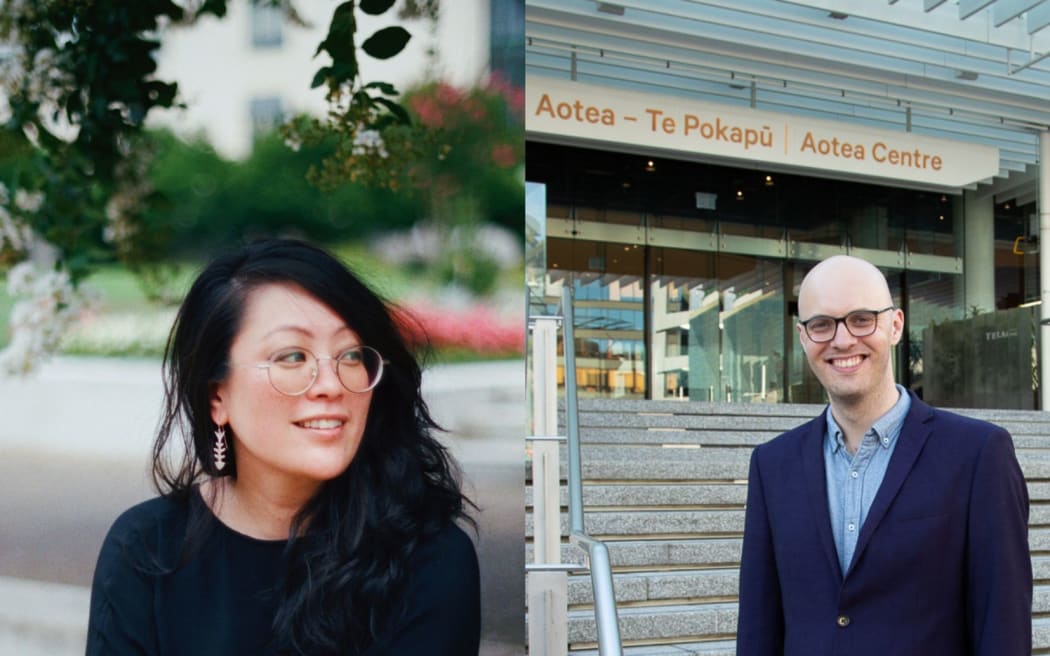
Rosabel Tan and James Wenley Photo: Supplied
On the brink of collapse - that's the stark portrayal of the state of the arts media in a new report New Mirrors, commissioned by Creative New Zealand.
Writer, producer, former reviewer and founding editor of The Pantograph Punch Rosabel Tan and theatre critic and theatre lecturer at the Victoria University of Wellington James Wenley co-authored the report. They spoke to 52 artists, journalists, editors, publicists and decision makers, supported by a media advisory group earlier this year as part of the process.
The picture painted is one of an under-resourced and under-valued industry with multiple compounding issues contributing to a deterioration of arts media, a breakdown of relationships between artists and journalists and an erosion of trust. The decline in critics is an on-going issue creating a void of reviews, feedback for artists, the lack of opportunity to reach and build new audiences, and use reviews as a tool to apply for future funding. Reviews are also often the only record of a piece of work.
The report calls for three key needs to be met: stronger stories being told, more investment in the sector and a media landscape that accurately reflects New Zealand. Two key pathways are identified: a dedicated fund for arts and culture media projects, with a suggestion of five million dollars as a starting point and an Arts Media Centre. Similar to the Science Media Centre, the latter would build a bridge between artists and media; create a wider understanding of stories, spokespeople, targeted briefings and create a transparent network.
Rosabel Tan and James Wenley spoke to Culture 101's Perlina Lau about the state of the arts media and why they're calling for a culture shift and approach to the arts.
A survey of the visibility of art and culture within New Zealand media found 13.5 percent of media coverage was focused on arts and culture, but only 3.2 percent covers arts outside of film, music and TV.
That compares to sport, which was found to make up 25 percent of media coverage.
Wenley said their report challenges the idea that coverage of arts and culture is a 'nice to have' that can be foregone when times are tough.
"If you flip that ... arts and culture is something that is essential to everyone's life, is essential to cultures around the world, it's essential to how we understand and express big ideas and reflect about things in our lives and our country ... This is an argument to make this something that's far more prioritised, something that is not a 'nice to have', but is essential."
Tan and Wenley both said their investigations found similar problems globally.
"But really exacerbated by the scale that we have, which makes some of the problems even more acute and invisible," Wenley said.
There were also some examples of media making space for arts and culture, including Whakaata Māori, Tan said.
However one of the challenges they found was that both the arts sector and the media were very time and resource challenged and "stretched", creating practical barriers, she said.
"Some of those stats were ... so alarming to see. The number of journalists working in Aotearoa halved - more than halved, between 2006 and 2018. It's drastic, and I think the media is still trying to find a sustainable model going forward, they still haven't really recovered from that web 2.0 boom."
That had a meant erosion of consistent structured arts reporting and trust from the arts sector, leading to more "shallow" stories, and less pick-up on more meaty issues, Wenley said.
However, he was confident "there's a lot of opportunity to rebuild that trust." Starting with helping both sides understand each other's different needs.
Read and listen to the Mediawatch story about the reduction in music journalism, here.
The full report can be read online here.

